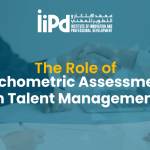So you’ve invested in a stellar training program, complete with engaging activities and insightful presentations. But wait! How can you truly measure its impact on your employees’ skillsets and knowledge? Enter the fascinating world of psychometric testing.
These scientifically designed assessments go beyond the surface level, providing valuable insights into an employee’s cognitive abilities, personality traits, and learning styles. But how can psychometric tests help evaluate employee learning and development? Buckle up, because we’re about to delve into a treasure trove of benefits that will transform your L&D (Learning and Development) initiatives.
Shedding Light on Learning Styles: A Perfect Match for Training Delivery

Imagine trying to fit a square peg into a round hole. That’s what happens when training programs fail to consider individual learning styles. Psychometric tests can unveil how your employees learn best. Are they visual learners who thrive on infographics and videos? Or perhaps they’re auditory learners who excel with lectures and discussions.
By understanding these preferences, you can tailor training delivery methods. Visual learners might benefit from interactive simulations, while auditory learners might appreciate role-playing exercises. This personalized approach ensures knowledge sticks, not just during the training session, but for the long haul!
Beyond the Score: Identifying Knowledge Gaps and Building on Strengths
Psychometric tests aren’t just about handing out scores. They act as a springboard for identifying knowledge gaps and pinpointing areas where employees excel. For instance, an aptitude test might reveal that some employees struggle with data analysis. This paves the way for targeted interventions, such as enrolling them in specific online courses or assigning them to a data-savvy mentor.
On the flip side, the tests might highlight exceptional problem-solving skills in an employee. This hidden gem can be nurtured by assigning them more challenging projects or even grooming them for leadership roles. Psychometric tests, therefore, empower organizations to cultivate a well-rounded workforce, where each individual’s strengths are recognized and weaknesses are addressed effectively.
Unleashing the Power of Self-Awareness: A Catalyst for Continuous Learning
The beauty of psychometric tests lies in their ability to foster self-awareness. When employees receive feedback on their learning styles, cognitive strengths, and areas for improvement, it ignites a powerful internal drive. They gain a deeper understanding of their learning journey and become active participants in their development.
This newfound self-awareness empowers employees to seek out additional learning opportunities that align with their unique needs. They might take the initiative to enroll in online courses, attend industry conferences, or even shadow colleagues with complementary skill sets. This intrinsic motivation fosters a culture of continuous learning, propelling the entire organization forward.
All About Psychometric Testing in L&D
Benefits of psychometric tests:
- Measure learning outcomes: Psychometric tests provide objective data on employee learning, like knowledge, skills, and attitudes. By comparing pre- and post-training test results, you can gauge learning effectiveness and identify areas for improvement.
- Tailor training interventions: Understanding employee strengths and weaknesses through psychometrics allows you to personalize training programs and interventions for maximum impact.
- Measure transfer of learning: Psychometric tests can assess how well employees apply their training to actual work performance, revealing the effectiveness of your L&D initiatives.
Types of psychometric tests:
The type of psychometric test used depends on the specific goals of your evaluation. Here are some common types:
- Cognitive tests: Measure mental abilities like problem-solving, memory, and reasoning.
- Personality tests: Assess behavioral traits and preferences.
- Motivational tests: Evaluate employee values, interests, and goals.
- Situational judgment tests: Present realistic work scenarios to assess decision-making skills.
Best practices for using psychometric tests:
To ensure responsible and effective use of psychometric tests in L&D, follow these best practices:
- Select valid and reliable tests: Choose tests that are relevant to your training objectives and target audience.
- Administer tests fairly and consistently: Follow test provider guidelines and provide adequate resources for employees to complete the tests.
- Interpret and communicate results clearly: Highlight key findings and implications for training outcomes and performance improvement.
- Regularly evaluate and review tests: Use quantitative and qualitative methods to assess test effectiveness and make adjustments as needed.
Conclusion: Psychometric Testing – A Game Changer for L&D
In today’s dynamic business landscape, a skilled and adaptable workforce is paramount. How can psychometric tests help evaluate employee learning and development? By providing a data-driven approach to understanding your employees’ unique learning styles, strengths, and weaknesses, these tests act as a game changers for L&D initiatives.
They pave the way for personalized training programs, targeted interventions, and a culture of continuous learning. So, ditch the one-size-fits-all approach and embrace the power of psychometric testing. It’s time to unlock the full potential of your workforce and watch your organization soar to new heights!









